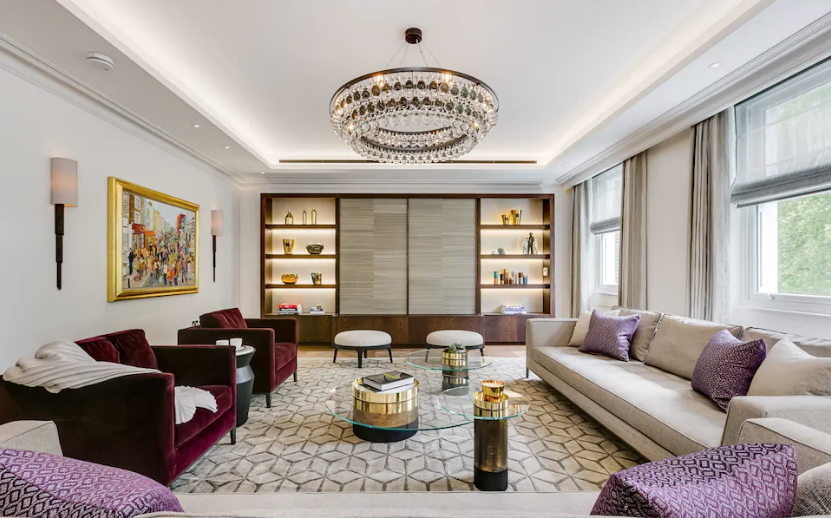Back in the heady days of the summer of 2008, a lavish press junket was held in the billionaires’ playground of Cap d’Antibes. Journalists from around the globe were flown in for a two-day bonanza, which took in sailing on a superyacht and a beach party complete with a synchronised water-skiing display.
The event was to launch a luxurious property venture rising out of a derelict building that was once a hotel where F Scott Fitzgerald was prompted to pen Tender is the Night.
Key to the marketing of the 50 ultra high-end apartments was that they were “super intelligent” in design. Emails could be addressed in the shower and LEDs coloured tap water according to the temperature, lest one be so distracted from emailing that you forget to test it with a fingertip.
It was part of the so-called “smart home” drive, which reached its zenith in around 2014-15, says Hugo van Bilderbeek, of high-end construction firm HvB Development.
“At the time, an abundance of tech was a prerequisite in a super-prime home, and system integration was all the rage,” agrees Steve Howat, co-founder of London Projects, a construction company. “Today, that trend has swung to the other extreme: a major goal for clients is to uncomplicate tech. We think the smart-home gold rush is coming to a close.”
Part of the drive to go back to basics is about maintenance. “These systems require a lot of it, as well as hardware and cabling, and it all takes up a huge amount of space. Often, if there were issues, the whole system would go down until an engineer was available,” says van Bilderbeek.
Another was usability. Scarred from having been faced with a bank of unreadable controls, clients have asked HvB to engrave the backplates of light switches to describe which does what. A general frustration has led to renewed interest for simpler and more elegant dials, says Serena Herbert of Forbes & Lomax, the manufacturers of a range of traditional dolly switches and dimmers.
But the other element is a growing awareness of how technology impacts health and well-being. This is something that hasn’t gone unnoticed by the Silicon Valley giants, many of whom are denying their children access to tech.
“Our clients are much more aware nowadays not only of their physical well-being, but of their mental health and the need to disconnect from tech. This is true at all ages, but especially for children and teenagers,” adds Howat.
Lucinda Croft, creative director of high-end nursery furniture specialists Dragons of Walton Street confirms this. “We’re seeing a rise in people wanting to rethink the materials that their babies sleep near, but also the radiation levels in and around the nursery.”
For an easy fix, systems such as Google Wi-Fi are gaining ground, as they allow parents to ring-fence certain rooms to cut off the connection and control screen time. “Some clients favour not having any sockets near their beds, as they don’t want to charge their phones or have any tech present while they rest or sleep,” says Howat.
For a more extreme option, the Austrian company Geovital has developed products to resolve “electronic pollution”. This includes a shielding mesh for external walls, which is effective against high-frequency radiation, as well as shielding paint, flooring mats and antistatic mattresses.
It also examines radiation levels in the home and conducts surveys for clients throughout the UK, including for Dragons’ clients.
A few are even defining tech-free zones at home. One way to achieve this is to install an EMF (electromagnetic field) kill switch, which cuts off the electric circuits in all bedrooms at night.
Others are commissioning specific tech-free rooms. Interior designer Richard Angel of Angel O’Donnell recently converted a former milking parlour in the grounds of a Grade II listed manor house in Hampshire into a yoga and meditation studio.
This isn’t to say that technology has lost its place in the home altogether: top-grade Wi-Fi signals to stream audio visual systems are still a must-have. “But there has been a shift of emphasis at the top end of the market away from ‘boys’ toys’ to solutions that are focused on integration, security and energy saving,” explains Malcolm Stewart of Knightsbridge Audio Visual.
Heating and cooling systems are here to stay (alongside those that reduce indoor air pollution) and home automation controls which allow these systems to talk to each other are popular, as they reduce running costs and tick energy efficiency boxes.
These are becoming ever more sophisticated, says van Bilderbeek. “We’re seeing a growing demand for passive infrared sensors, which can detect the pattern of life of the occupants and adjust heating and cooling based on usage, setting temperatures that even factor in the ambient body heat of a room.”
